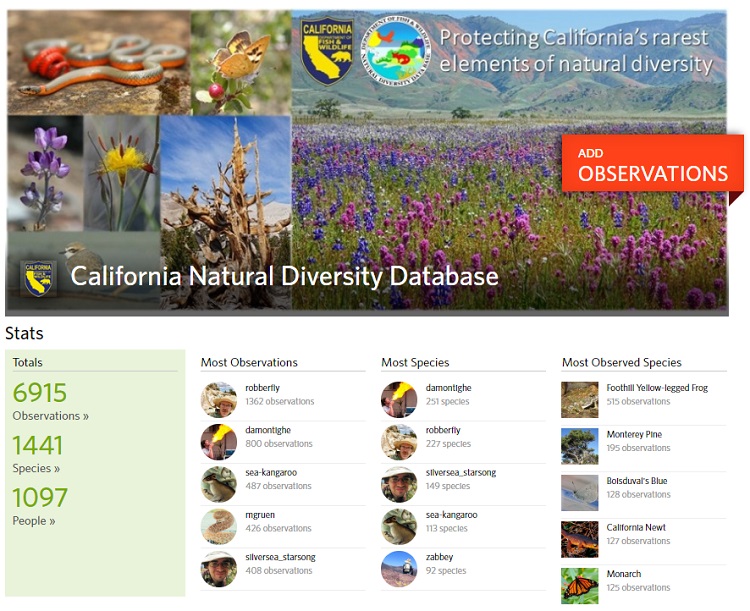This past weekend was Citizen Science Day! We’d like to take this opportunity to celebrate all the scientists and nature enthusiasts from the public who are out there collecting valuable data that would otherwise be overlooked. The CNDDB wants to utilize the power of citizen science, so we have launched our own  iNaturalist project.
iNaturalist project.
iNaturalist is an online platform and mobile application that allows users to record and share observations of organisms. It also serves as a social network for crowdsourcing species identification and connecting an extensive network of citizen scientists. The CNDDB created its own iNaturalist project primarily to gain access to precise coordinate locations, since the locations of most species we track are obscured by iNaturalist users or the program itself in order to protect the species. It is important to note that using iNaturalist isn’t a substitute for filling out our  CNDDB field survey forms. The CNDDB field survey forms were designed to collect specific data that would meet the reporting requirements which many professional biologists and those working under a special permit are held to. If you are an iNaturalist user, please consider joining our iNaturalist project and opting in to sharing the specific location information of your rare species detections with us!
CNDDB field survey forms. The CNDDB field survey forms were designed to collect specific data that would meet the reporting requirements which many professional biologists and those working under a special permit are held to. If you are an iNaturalist user, please consider joining our iNaturalist project and opting in to sharing the specific location information of your rare species detections with us!

